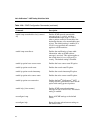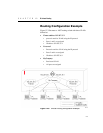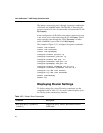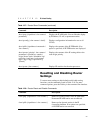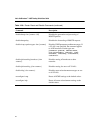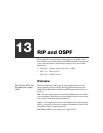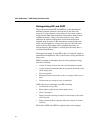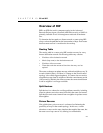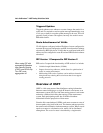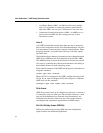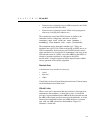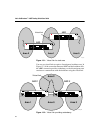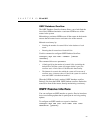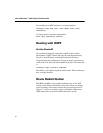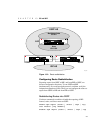
226
Intel
®
NetStructure™ 480T Routing Switch User Guide
Triggered Updates
Triggered updates occur whenever a router changes the metric for a
route, and it is required to send an update message immediately, even
if it is not yet time for a regular update message to be sent. This will
generally result in faster convergence, but may also result in more
RIP-related traffic.
Route Advertisement of VLANs
VLANs that are configured with an IP address, but are configured to
not route IP or are not configured to run RIP, do not have their subnets
advertised by RIP. Only those VLANs that are configured with an IP
address and are configured to route IP and run RIP have their subnets
advertised.
RIP Version 1 Compared to RIP Version 2
When using RIP with
supernetting/Classless
Inter-Domain Routing
(CIDR), use RIPv2 only.
Turn RIP route
aggregation off.
RIP version 2 expands the functionality of RIP version 1 to include:
• Variable-Length Subnet Masks (VLSMs)
• Support for next-hop addresses, which allows for optimization of
routes in certain environments.
• Multicasting; RIP version 2 packets can be multicast instead of
being broadcast, reducing the load on hosts that do not support
routing protocols.
Overview of OSPF
OSPF is a link-state protocol that distributes routing information
between routers belonging to a single IP domain, also known as an
autonomous system (AS). In a link-state routing protocol, each router
maintains a database describing the topology of the autonomous
system. Each participating router has an identical database
maintained from the perspective of that router.
From the link-state database (LSDB), each router constructs a tree of
shortest paths, using itself as the root. The shortest path tree provides
the route to each destination in the autonomous system. When several
equal-cost routes to a destination exist, traffic can be distributed
among them. The cost of a route is described by a single metric.



